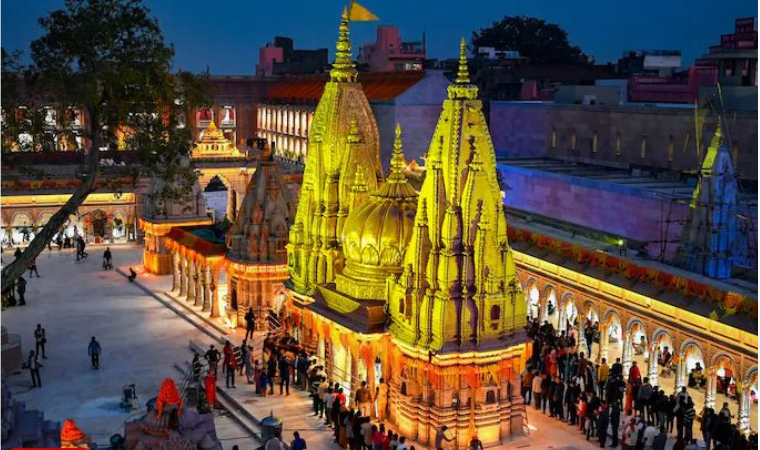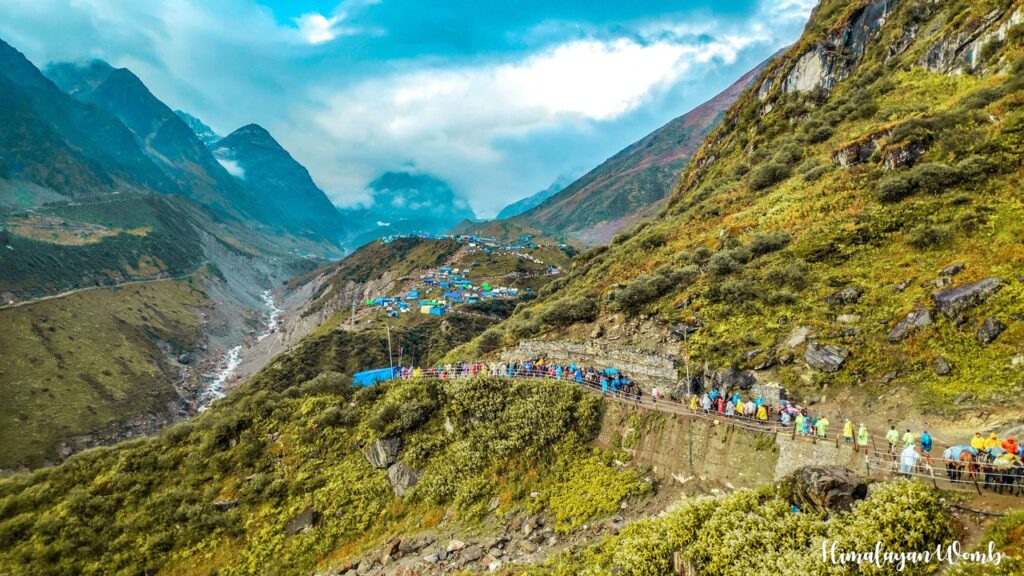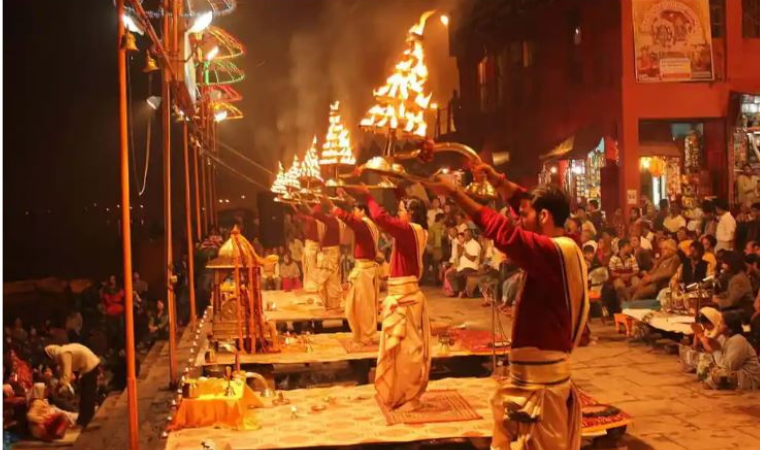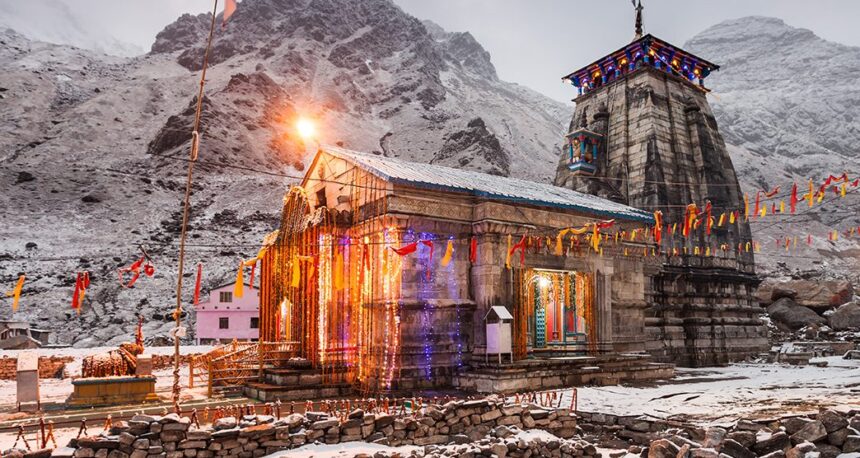India’s temple cities have always been more than places of worship—they reflect centuries of devotion and cultural heritage. From the bustling ghats of Kashi to the serene heights of Kedarnath, these cities once thrived on simple rituals and spiritual practices. Today, they are evolving, blending modern temples and improved pilgrimage infrastructure with centuries-old traditions. This transformation shows how India is embracing progress while keeping its sacred spaces alive for spiritual tourism and sustainable pilgrimage.
Previously pilgrimage referred to tight corridors, unpredictable accommodation, and physical suffering. Many people regarded struggle as a constituent of devotion. Nowadays, the experience has changed. The temple cities are adapting to the needs of the new pilgrims. They come with a feeling of safety, comfort, and convenience without losing the sanctity. This trip to Kashi and Kedarnath shows that modernization and faith might be used simultaneously. It had an impact on creating new forms of experience of devotion without neglecting the traditions of centuries.

Transformation in Kashi
Kashi or Varanasi is one of the oldest existing cities in India. Millennia old pilgrims had to manoeuvre through overcrowded alleys to access the Kashi Vishwanath Temple. Pilgrims frequently had little amenities and struggled through the crowds with significant difficulty. The Kashi Vishwanath Corridor has changed this. Authorities have built large avenues connecting the temple and the Ganga Ghats, allowing pilgrims to move freely. Open courtyards, sleeping spaces and arranged entrances minimize disorder making sure that worship can proceed with decency.
Kashi is not limited to modernization in physical infrastructure. The city has become more accessible by online darshan booking, live streaming of rituals and real time crowd management. People who cannot travel, like the aged or those abroad who are devotees of Kashi, can now access the spiritual Kashi essence. Local industries, tea sellers, and artisans have also been able to adopt the inflows of visitors. They have provided economic opportunities without destroying the traditional livelihoods. Pilgrims can no longer just struggle through logistical challenges but can be able to concentrate on reflection, ritual and immersion.
The Strength and the Revival of Kedarnath.
In contrast to Kashi, Kedarnath sits in the Himalayas, where the nature was always beautiful and dangerous. The floods in the year 2013 were disastrous with lives, lodges, and roads being destroyed. It was not clear that the shrine would survive. However, the post-disaster reconstruction process turned Kedarnath into an icon of the power of resistance. It showed that religion could resist the negative influence and adjust to the new requirements without its sacredness.
The reconstructed Kedarnath is focused on the safety and ecological balance. The broader paths, strengthened embankments, helipads and medical amenities make sure that pilgrims travel safely in the mountains. Stone building will save the traditional look of the area and offer contemporary facilities. Along with centuries old devotion, rest zones, health centers, and disaster-response systems are now being part of pilgrimage experience making it secure and spiritual. The pilgrims are now able to enjoy the grandeur of the Himalayas without losing the safety and spiritual concentration.

Striking a balance between the Modern Comfort and the Spiritual Experience
One of the questions emerges: is it possible to preserve spiritual sanctity in the modernized world? Since time immemorial, suffering was an element of piety. Spiritual tests included walking barefoot, standing in queues, or exposing to the elements. Comfort is now considered as a tool to facilitate the spiritual interactions of a person, but not as something distracting. Now, pilgrims do not have to worry about exhaustion and logistical issues and can engage in meditation and prayer, keeping spiritual practice at the center of the experience.
This change also expands the number of pilgrims. Young professionals, students, and international visitors are visiting the cities in pursuit of inner peace, cultural exposure, and a sense of connection to the heritage of India. Cleaner restrooms, organized queues, guided services, and accessible paths make these journeys more accommodating and decent without sacrificing the spirit of devotion. Modern infrastructure and technology have enhanced the spiritual experience rather than substituting it.
Sanctity in the Development process
As development goes so does the threat of commercialization. Cafes with views of Kashi ghats or Kedarnath souvenir stalls improve the local economies. However, they may destroy the spiritual atmosphere when neglected. The government has taken some steps, like the zoning of hotels, the use of plastics, and preservation of aesthetics, to make sure that religion is central to the experience.
It is also of utmost importance to preserve culture. Heritage walks, traditional music performance, storytelling installations all bring the pilgrims back into the richer history of these cities. The evening aarti in Kashi is as much a cultural as it is a spiritual experience, whereas the exhibits in Kedarnath tell the story of the survival and the mythological background of the shrine. This integration makes pilgrimages not just ritual but meaningful in terms of devotion, a way to combine education with devotion, to find out what the larger meaning of these sacred spaces is.
Sustainability and Environmental Responsibility
Both Kashi and Kedarnath are adopting the concept of sustainability as one of their components of transformation. Ghat cleaning efforts and sewage treatment in Kashi save the sacred Ganga and plastic bans and waste management measures in Kedarnath save the vulnerable Himalayan ecosystem. Pilgrimage has ceased to be merely a spiritual practice but it is a duty to the land, water and the environment that support these sacred spaces. These cities are providing precedents of how religiousness and environmental responsibility can co-exist.

Community and Economic Impact
The economic implications of transformation of Temple cities are important. The local communities gain as a result of better employment opportunities, constant tourist inflows, and sustainable livelihoods. Artisans, guides, porters and small businesses benefit because of the boost in foot traffic, and training programs enable the residents to keep pace with the demands of the modern world in hospitality and cultural presentation. Notably, development does not outshine tradition. Priests, guides and artisans are still important to preserve rituals and cultural heritage. Temple cities also involve the locals in planning and modernization to make sure that transformation does not destroy but fortifies community identity.
Difficulties and Issues
Nevertheless, there are still some challenges. Pilgrims and tourists increase the demand of resources and infrastructure in festival seasons like Maha Shivratri. Finding a balance between modernization and authenticity is a never-ending endeavor. Broader streets, structured avenues, and bigger accommodations enhance safety and lead to the potential loss of the close spiritual feel. Trade-offs between devotion and development are constantly being negotiated by authorities and communities so that pilgrims are still able to perceive the religious essence of the act.









